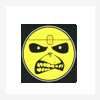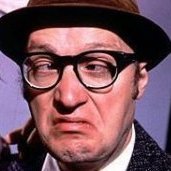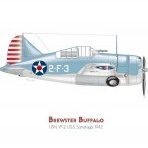-
Posts
181 -
Joined
-
Last visited
About Steve Collins
- Birthday 14/09/1954
Contact Methods
-
Website URL
http://
-
ICQ
0
Profile Information
-
Gender
Male
-
Location
Glendale, AZ
-
Interests
1/72 aircraft in general, IAF and 352FG specifically, 1/72 armor
Recent Profile Visitors
2,608 profile views
Steve Collins's Achievements

New Member (2/9)
22
Reputation
-

1/144 - Boeing B-757 family by Zvezda - B757-200/-300 released
Steve Collins replied to Homebee's topic in The Rumourmonger
You and me both! -
Guys, My poor old brain is causing me some difficulties. Quite some time ago, I saw a reference to a process for applying those thick Far Eastern-made decals from the likes of Tamiya, Fujimi, and Hasegawa. I followed the link, read the original post, copied the process to my computer, and tried the process. It worked just as advertised. Now I want to pass that tip on to the people in our local club and I'd like to attribute the original author along with the quotation (see below). If someone could give me his name, I'll be certain to include it when I forward the information. Thanks very much. "The best way to get all Japanese decals ( Fujimi, Hasegawa, Tamiya etc)to work as they're supposed to is use hot water and the correct setting solutions. You'll need a bottle each of Gunze Mr Setter and Mr Softer. Micro sol and others won't work as they're formulated differently. Do not use Gunze on Microscale or Cartograf decals as it will chew right through them. Dip the decal in hot water, it doesn't need to be boiling but it does need to be fairly hot. The temperature of a drinkable tea will do. The glue is heat activated and is what makes up most of the thickness. If you dip it in cold water you'll spend the rest of the day waiting and cursing. Lay down some Mr Setter, this is in the blue bottle. It acts as an additional glue. Slide the decal onto it and into postion and leave it alone. The decal should wrinkle a little. Give it 10 mins or so and go over the decal with a brush with a little Mr Softer (green bottle) on it. Use sparingly as it is extremely hot. Too much and it will damage the paint, especially the weaker acrylics. The decal will now wrinkle a lot. Do not touch it as it is almost liquified at this point. Once it is dry it will have smoothed out and will lay down beautifully over just about any raised or recessed detail you care to think of. Used properly it is probably the best conforming decal process in the industry. Used incorrectly and you'll be just another guy complaining about crap Japanese decals." Steve
-

1/72 EB-57B Vermont ANG
Steve Collins replied to Andrew D Jolly Rogers guy's topic in Work in Progress - Aircraft
Nice work there, Andrew. I used to see those guys when they'd come down to Homestead from Mountain Home in the late '70s. That was before they closed the active duty squadron and sent the planes to you guys in Vermont. I've got a couple of -57s (B-57B and B-57G, both in Vietnam) coming to a slow (very slow) boil. Spending too much time on the rescribing. Yes, I'm about half a bubble off true. I _think_ I've got enough weight in the nose on both. Hope mine turn out as well as yours. Steve -

A-10A (Academy 1/72) - Operation Iraqi Freedom
Steve Collins replied to Fox_Two's topic in Work in Progress - Aircraft
As far as I know, A-10s were never stationed at Ramstein. There was a detachment at a base in northern Germany (Jever?) for many years. GB had A-10s at (at various times) Alconbury, Bentwaters, and Woodbridge. In the early 90s, Spangdahlem had one squadron of A-10s for several years. Ramstein during that period had F-4Es, transitioning to F-16C Block 25s then Block 30s. Sorry for the hijack. Steve by the way, if you or anyone else should try this kit again, the cockpit and associated parts from the Monogram kit fit almost perfectly and improve the look immensely. Nice job you're doing. -
Very nice MiG there, Mike. Gonna bring it to San Marcos in August? I look forward to seeing it there. Right in the middle of building one now. Agree on the issues getting sufficient weight forward enough. I have weights inside the intake splitter and behind the cockpit. The fit of the clear part to go on the bottom of the fuselage was problematic for me. The fuselage plastic was too thick for the clear parts (which I don't think need to be clear, by the way) to sit flush with the fuselage. I had to thin the inside of the fuselage to get it close. In addition to the issues with the wing mentioned elsewhere, I found that the bottom of the wing is not deep enough to fit flush at the wing root on both sides. I thought perhaps it was my fault as I had clamped the wings while they were drying, so I bought another kit and the set from that kit were the same without clamping. So that will be an interesting FSR (fill, sand, repeat) session. But, in the end, it looks like a MiG-17, so I'll make it work. Cheers. Steve
-
Opus, try running the tip of a new blade along the inner edge of the tape prior to pulling it up to separate it from the Mr.S or CA or whatever you try. Gently, of course, don't wanna score the plastic, just separate the tape from the filler. Steve
-

Spitfire Mk22 [Special Hobby 1/72]
Steve Collins replied to Rémi's topic in Work in Progress - Aircraft
Remi, I look forward to your progress. I have this kit and look forward to how yours comes out. Thanks. Steve -

Revell 1/72 Boeing B17G Flying Fortress
Steve Collins replied to kpnuts's topic in Work in Progress - Aircraft
A couple of things that may help with the clear parts, if you want to use 'superglue' (cyanoacrylate - CA) adhesives. Dip the clear parts in Future/Pledge Floor Care/whatever clear acrylic floor polish you have available in your area and let it dry overnight. The clear acrylic provides a barrier between the fumes from the CA and the plastic. You should remove the Future from the edges you're gluing, but just from the edges. Second thing is to find one of the 'non-fuming' types of CA that are available on the market. They're usually labeled as 'For Clear Parts.' Hope this helps. Steve -

Thinning problems with Mr hobby self levelling thinner.
Steve Collins replied to LewisWood12's topic in Paint
I could never answer anyone when asked what my thinner ratios are, though I'd say it usually comes out to about 2:1 thinner:paint. The best way I've found to describe it is to mix the paint in a clear jar. After thoroughly mixing the paint, hold the jar up to a light and tilt it so you can see in through the top toward the light. As you tilt the jar so that the level of the paint goes across the bottom of the jar, if properly mixed, there should just be a bright separation line between the liquid and the paint that remains on the jar above the liquid paint (same as if you tilt a glass of milk and do the same thing). If the paint above the line is very translucent, you've gotten it too thin, if the line doesn't appear right away, it's not thin enough. Yes, very inexact, I know, but it works well for me for both acrylics and enamels, usually in the 12-15 psi range. Hope this can help you get a good mix for painting. Steve -
Glad I could help in some small way. Steve
-
Opus, I think you wound up with a great looking little jet there. Outstanding job. Steve
-

Revell 1/72 B-17G Flying Fortress
Steve Collins replied to Yvan S's topic in Work in Progress - Aircraft
Yvan and Chris, you may be talking about two different iterations of the Revell B-17 (depending on how long ago you were a teenager, Chris). This particular one came out in about 2011 and is an entirely new mold. The previous version was done in the '60s originally and was a B-17F (usually released as Memphis Belle). That may be where the wheels-up/wheels-down difference comes in, among a host of other things, most especially quality and level of detail. By the way, Yvan, the build is looking good. I'm looking forward to seeing it progress as I have a couple of these to do myself. Steve -
Glad the wash is working for you. My modeling time is usually limited and the whole process is much faster than oils. Steve
-
Maybe it's just an artifact of the photo, but is there something (sprue tag, mismold?) attached to the fuselage piece forward where the angles are? I think it should just be a slightly obtuse angle, just greater than 90 degrees, but seems to have a piece that goes, well, down from there that is impacting on the nose wheel bay piece. Steve
-
Good luck, Opus. I look forward to seeing the result. Steve







